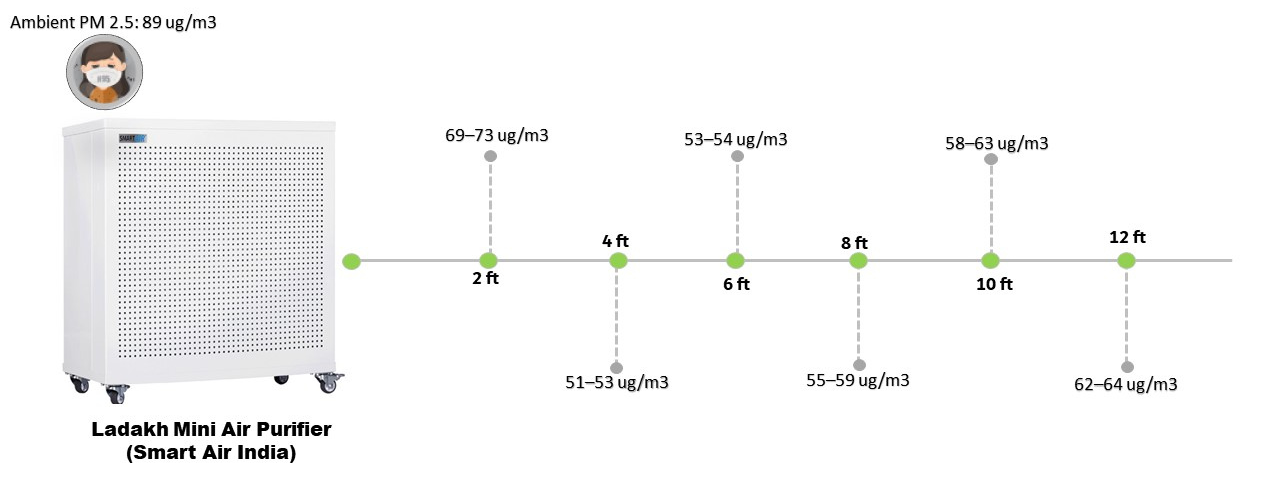



In October 2020, the Delhi government sanctioned INR 20 crore to install a ‘smog tower’ in Connaught Place, Delhi, to de-risk air pollution. Earlier, in November 2019, following episodes of high pollution, the Supreme Court had asked the Centre and the Delhi government to come up with a road map for installing smog towers in the national capital region (NCR) to combat air pollution. Delhi installed its first smog tower in Lajpat Nagar in January 2020. However, air pollution experts have repeatedly raised doubts about smog towers’ feasibility as an effective solution to improve air quality.
The experiment
Researchers at CEEW conducted an amateur experiment with a Smart Air Ladakh Mini Air Purifier to test its effectiveness in the open. The purifier has a clean air delivery rate (CADR) of 585 m3/h and is recommended for a room size of 85 m2. The CADR, initially defined by the Association of Home Appliance Manufacturers (AHAM) and well recognized by manufacturers, indicates the clean air volume delivered by the treatment system (usually in m3/h)1.
The purifier was placed in ambient conditions facing east in a residential area at Okhla Phase II. Two low-cost sensors from Prana Air were used to record periodic measurements of particulate matter (PM) 2.5 at varying distances of 2 ft, 4 ft and up to 12ft from the purifier.
What did we observe?
The experiment started at 03:45 pm on 18 October 2020. The ambient PM 2.5 concentration at the start of the experiment was 89 ug/m3, which is 1.5 times higher than the 24-hour average National Ambient PM 2.5 standard. After running the purifier for 1.5 hours, the ambient levels reduced to 51-53 ug/m3 at 4 ft in the line of air flow. At 12 ft, the PM 2.5 level reduced to 62-64 ug/m3. The PM 2.5 levels were in the range of 70-75 ug/m3 outside the line of air flow. The impact was only faintly discernible farther away from the purifier. On turning the purifier off, the PM 2.5 levels bounced back to the ambient levels immediately, indicating that the impact is short-lived.
PM 2.5 concentration recorded in the line of air flow

Key takeaways
First, in an outdoor space, the purifier will only benefit those who are within a limited distance for an extended period of time. However, people would be constantly moving in and out of this air column in an outdoor commercial setting like a market place.
Second, the annual PM 2.5 concentration in Delhi was ~ 105 ug/m3 in 2019. The reduced PM 2.5 levels on account of using outdoor purifiers would not bring down air quality to safer levels to yield health benefits.
Third, scaling outdoor purifiers to make a considerable impact over a small area would require significant outsizing of purifiers and would result in wasteful expenditure of public money.
The only way out of this alarmingly high level of air pollution is to control emissions at source through various initiatives, including installing pollution control equipment in power plants and industries, enhancing e-mobility in cities and scientific waste management. Moreover, citizens should be encouraged to use purifiers only indoors to reduce high PM 2.5 exposure.